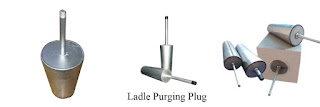What are the process conditions that affect the damage of the induction furnace lining
During the use of the intermediate frequency furnace, the thickness of the refractory used for the furnace lining is only 70-110mm. The inner side is in contact with the high-temperature molten metal, and the outer side is close to the water-cooled coil. The temperature difference between the inner and outer sides of the refractory is large. Under the conditions of use in aggressive environments. The main process conditions that affect the damage of the furnace lining include: smelting temperature, degassing time, one-time degassing amount, chemical composition of slag and steel (iron) type produced. The main influencing factors that damage the furnace lining are: chemical corrosion of slag, flaking of refractory structure and thermal corrosion.
As the furnace capacity increases, the proportion of heat lost from
the surface of the molten steel decreases. The slag temperature is
higher than that of a small-capacity furnace, and the fluidity of the
slag is better than that of a small-capacity furnace, thus increasing
the corrosion of the furnace lining. Large-scale induction furnaces
mostly adopt the method of mixing steel and slag for tapping. The slag
is required to have good fluidity to adapt to the conditions of
tapping. Therefore, the slag line is severely corroded, which is
another reason for the decrease in the service life of the lining. Due
to the above reasons, the service life of large-scale induction furnace lining
is lower than that of small and medium-sized induction furnaces. In
terms of improving the service life of the furnace lining, the thickness
of the furnace lining should be appropriately increased. However, as
the thickness of the furnace lining wall increases, the resistance
value increases, the reactive power loss increases, and the electrical
efficiency decreases. Therefore, the thickness of the lining wall is
limited to a certain range. Therefore, a reasonable wall thickness
must be selected to ensure high electrical efficiency and ensure the
service life of the furnace lining.
2. The initial failure of the lining is due to the front end corrosion caused by the sintered layer of the lining refractory material dissolved in the slag, and the occurrence of cracks due to the cyclic change of temperature. Another factor that causes crack propagation in the overall liner is due to heating to excessively high temperatures.
3. The life of the furnace lining depends on the correct operation, including the inspection of the lining body and the application of "refill material" to repair the cracks that appear in time to prevent molten steel and slag from penetrating into the furnace lining matrix.
Article Source:What are the process conditions that affect the damage of the induction furnace lining
Company name:Wanhao Refractory
Email:sales100@wanhaorefractory.com
Website: http://www.wanhaorefractory.com/


评论
发表评论